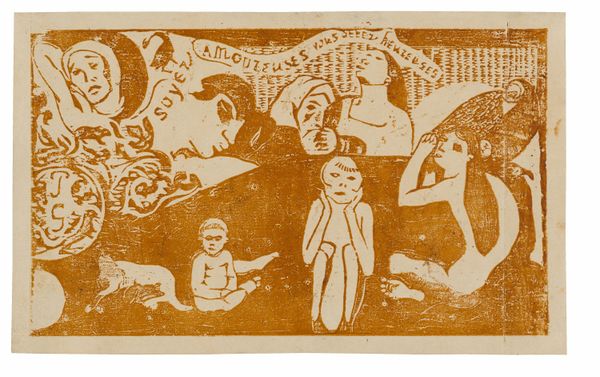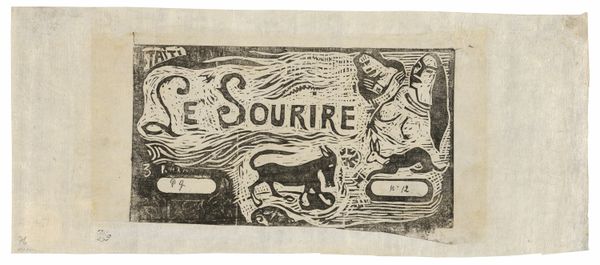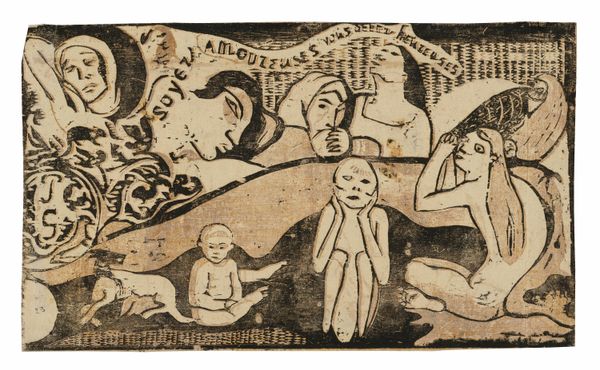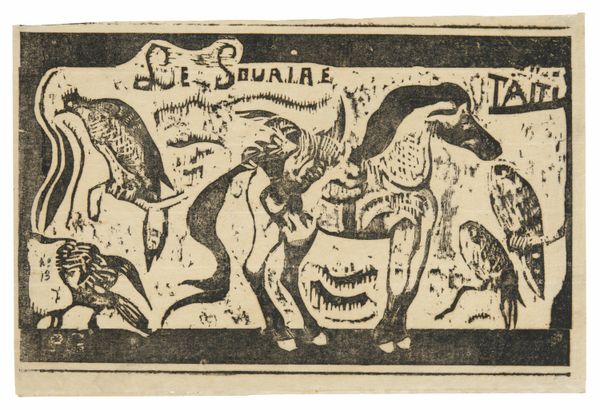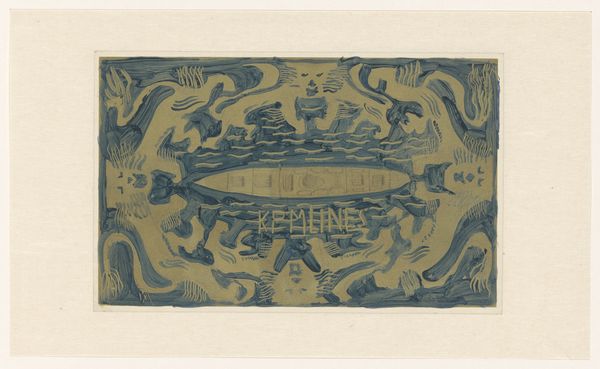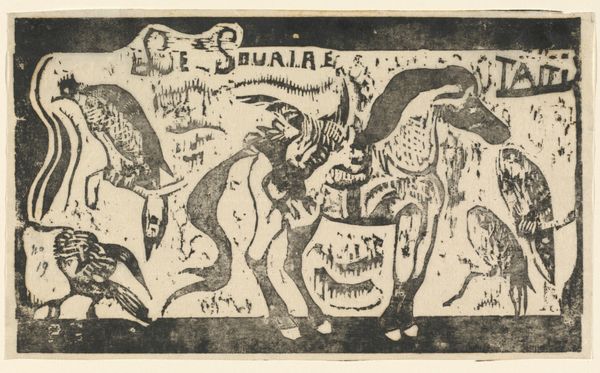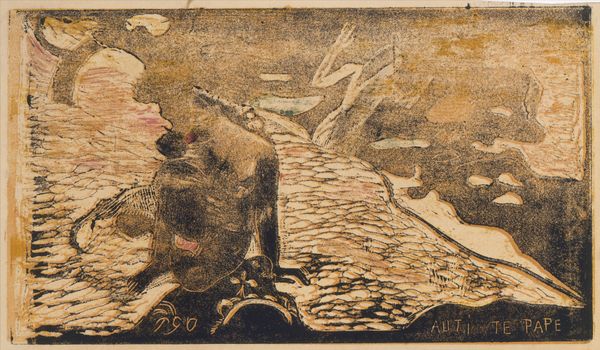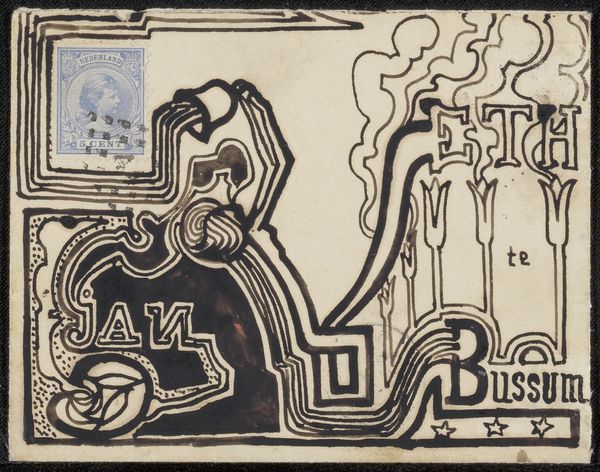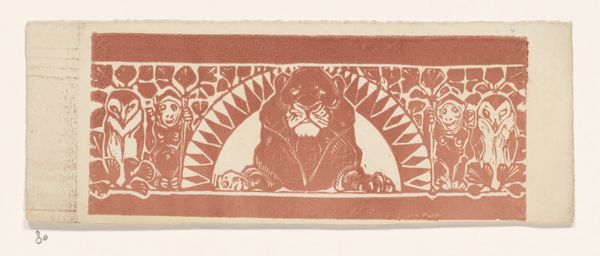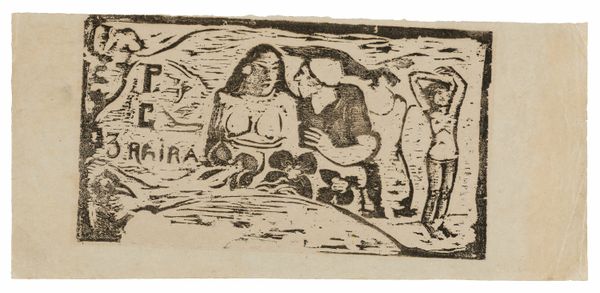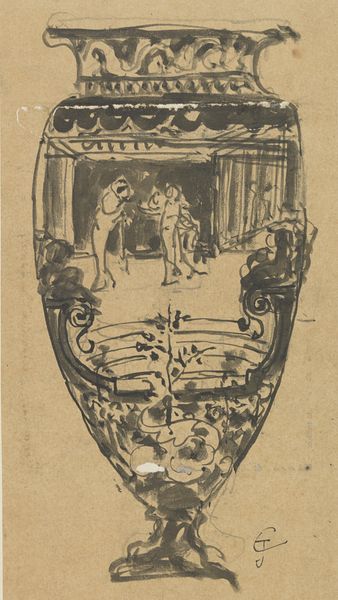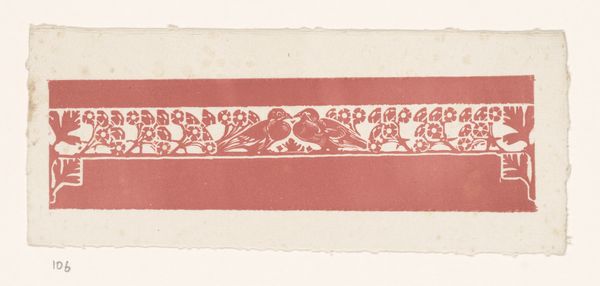
Ontwerp voor vignet in het gedenkboek voor koningin Wilhelmina uit 1923: Handel, Nijverheid, Bank- Geldwezen 1874 - 1945
0:00
0:00
drawing, graphic-art, ink
#
drawing
#
graphic-art
#
art-nouveau
#
allegory
#
figuration
#
ink
#
pen work
#
decorative-art
Dimensions: height 90 mm, width 424 mm
Copyright: Rijks Museum: Open Domain
Curator: Alright, let's begin. Editor: This is "Ontwerp voor vignet in het gedenkboek voor koningin Wilhelmina uit 1923: Handel, Nijverheid, Bank- Geldwezen" by Carel Adolph Lion Cachet, from sometime between 1874 and 1945. It’s ink on paper, a preparatory drawing, and it has a striking Art Nouveau style. I find the flowing lines and the allegorical figures really capture a sense of idealized industry. What’s your take on this? Curator: I see a direct commentary on the burgeoning Dutch economy, crafted for a queen's commemorative album. Look at the linear quality achieved through ink, it shows how it relates directly to graphic reproduction; it also begs the question as to its mass circulation within Dutch society and at the very basis of economic structures. Editor: So you’re saying that the choice of graphic arts impacts how it can affect cultural perceptions, especially those around royalty and wealth? Curator: Precisely. Think about who has access to printed imagery versus unique paintings, how does this democratization of the image transform the elite and royal status of its patrons? This artwork isn’t just *of* industry, it *is* a product of industrial processes, ready to be consumed by the masses. Where do we place the artwork as cultural currency and economic driver? Editor: That makes me look at the title in a different way too: a memento, a circulation of the Queen that parallels circulation of capital. I hadn't considered that angle. Curator: Indeed. What began as a simple gift can also tell us about the nature of Dutch industrial production. Editor: It’s like the drawing itself is participating in and reflecting the very industries it depicts. The act of its making tells a story of its time. Thank you. Curator: My pleasure. It is crucial that one explores material existence as an inextricable dimension of any artistic undertaking.
Comments
No comments
Be the first to comment and join the conversation on the ultimate creative platform.
